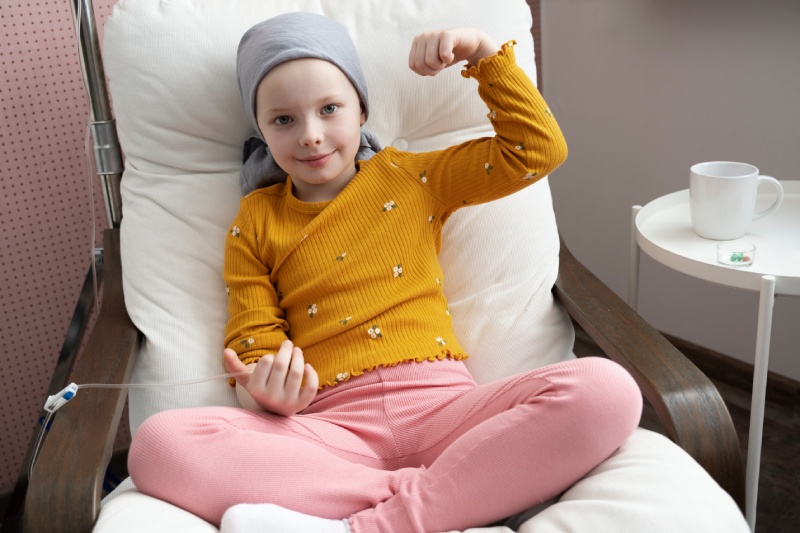Login
Signup
Childhood Cancer

Childhood cancer, a devastating disease that affects children of all ages, is a global health crisis. Despite significant advancements in medical research, the journey for these young warriors remains fraught with challenges. This article delves into the complexities of childhood cancer, the urgent need for support, and the profound impact of donations.
Understanding Childhood Cancer
Childhood cancer encompasses a variety of malignant conditions that arise in children and adolescents. While less common than adult cancers, it is the leading cause of death by disease in children worldwide. The most common types of childhood cancer include:
- Leukemia: Cancer of the blood and bone marrow.
- Brain and Spinal Cord Tumors: Malignant growths in the central nervous system.
- Neuroblastoma: A type of cancer that develops in nerve tissue.
- Wilms Tumor: A kidney cancer that primarily affects young children.
- Rhabdomyosarcoma: A cancer of the muscles.
- Non-Hodgkin Lymphoma: A cancer of the lymphatic system.
The Unique Challenges of Childhood Cancer
Children with cancer face a unique set of challenges that distinguish their experience from adult cancer patients. These challenges include:
- Rapidly Dividing Cells: Children’s bodies are in a constant state of growth and development, leading to rapid cell division. This increased cellular activity can make them more susceptible to the development of cancer.
- Smaller Bodies: Children have smaller bodies and organs, making them more vulnerable to the side effects of cancer treatment.
- Developing Minds and Bodies: Cancer treatment can disrupt a child’s physical, emotional, and cognitive development.
- Fear and Anxiety: The diagnosis of cancer can be a traumatic experience for a child, leading to fear, anxiety, and depression.
- Financial Burden: The cost of cancer treatment can be overwhelming for families, particularly in low-income countries.
The Role of Donations
Donations play a crucial role in supporting children with cancer and their families. Here’s how your contribution can make a difference:
- Funding Research: Donations fuel groundbreaking research to develop more effective and less toxic treatments for childhood cancer.
- Providing Financial Assistance: Donations help families cover the costs of treatment, including medical bills, transportation, and housing.
- Supporting Patient Services: Donations support essential patient services, such as counseling, social work, and child life specialists.
- Improving Quality of Life: Donations help fund programs that improve the quality of life for children with cancer, such as recreational activities, camps, and educational support.
How to Make a Difference
There are numerous ways to support children with cancer:
- Donate to a Reputable Organization: Choose a reputable organization dedicated to childhood cancer research and patient support.
- Volunteer Your Time: Volunteer at a local hospital or cancer center to provide support and companionship to children and families.
- Raise Awareness: Spread awareness about childhood cancer through social media, community events, or fundraising campaigns.
- Advocate for Policy Change: Contact your elected officials to advocate for increased funding for childhood cancer research and patient care.
The Power of Hope
While the journey for children with cancer is often arduous, hope remains a powerful force. With the support of dedicated healthcare professionals, researchers, and compassionate donors, we can work together to improve the outcomes for these young warriors. By making a difference, you can help ensure that every child with cancer has the opportunity to live a full and healthy life.
By following these guidelines and incorporating compelling storytelling, you can create a powerful and informative article that inspires action and compassion.
The Impact of Support
Support plays a crucial role in helping children with cancer and their families navigate this challenging journey. Here’s how support can make a difference:
- Emotional Support: Providing emotional support, such as counseling and therapy, can help children and their families cope with the stress and anxiety associated with cancer.
- Financial Assistance: Helping families cover the costs of treatment, including medical bills, transportation, and housing, can alleviate significant financial burdens.
- Practical Support: Offering practical assistance, such as meal delivery, childcare, and transportation, can lighten the load for families and allow them to focus on their child’s care.
- Advocacy: Advocating for increased funding for childhood cancer research and improved access to treatment can help ensure that all children with cancer receive the care they need.
“Let’s help children with cancer through the childrenrfuture website.”
Or, for a more detailed and impactful statement, you could say:
“Discover how you can make a significant difference in the lives of children battling cancer by visiting the childrenrfuture website. Your support can provide essential resources, hope, and a brighter future for these young warriors.”